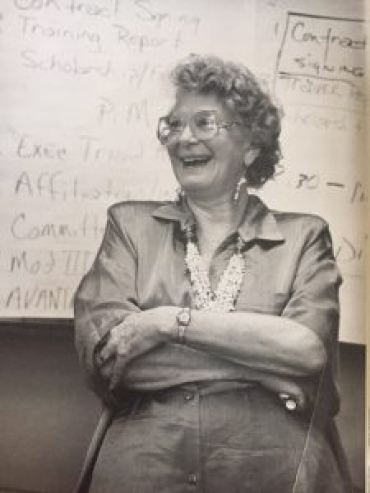Virginia Satir
When Virginia Satir talked about her life and who she was, it was usually to make a point in her teaching. This was because she genuinely enjoyed talking about herself and incorporated this into what she was doing most often: working. Her work was such an integral part of her life that inevitably she acted as if the two were one. Virginia shared herself and her stories with great feeling and enthusiasm. In her book Your Many Faces Virginia spoke of the diverse makeup of human beings, emphasizing the importance of accepting all of our diverse characteristics as who we are. She taught that by embracing what we see as our negative traits, we can effect transformation. To illustrate this point, Virginia shared her characteristics, associating them with historical and fictional figures. This is how she explained it:
When I divide these adjectives into positive and negative, the positive list comes out compassionate, sexy, wise, loving and funny, all faces I would be proud to claim to the outside) world. The adjectives selfish, overburdened, and stubborn would be those faces that I would label negative. Formerly, before I understood what I know now, I would try to banish all traces of those characteristics I considered negative.
What I have learned is there is a germ of usefulness in each negative part as well as a germ of destruction in each positive part... Since all of these parts reside in me, then I can say that inside me I have my Eleanor Roosevelt, my Marlene Dietrich, my King Henry VIII, my Old Woman in the Shoe, my Aristotle, my Jesus Christ, my Groucho Marx and my Mary, Mary Quite Contrary. (Your Many Faces 81)
Virginia's openness about herself demonstrated a profound awareness that how people perceive and represent themselves affects how others see them. Thus, Virginia endeared herself to others by first being endeared to herself. In addition to talking about her many "parts," Virginia also spoke about her height as an important characteristic. She claimed that her five feet and ten inches allowed her to see the world: "I was this size by the time I was ten. I haven't grown any since I was ten years old. That put me in a place where I never got into competitiveness; rather, I felt free to observe anything that went along" (Russell 4). Virginia's awareness of her own height combined with her emphasis on eye contact in a creative way. Often, when working with trainees, couples, or children and adults, Virginia would use a stool or chair to bring two people to the same eye level. This way, she argued, the taller person was no longer in a position of power over the shorter person, so the two were better able to communicate.
Virginia's efforts to bring people to the same eye level reflects that in some ways her height had a more complex effect on her than just enabling her to see the world.
I don't think that I move-in and take over people at all. I think I feel free to look at whatever I want to look at with confidence. And it's possible to understand.




